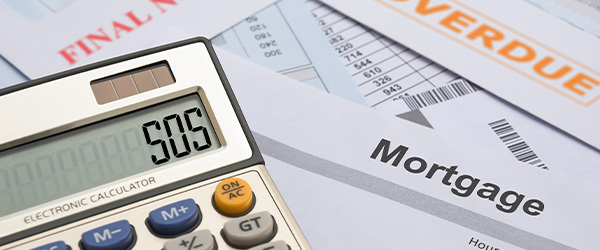2023 has been an historic year for the Reserve Bank of Australia’s (RBA) in raising the cash rate to an 11-year high in an effort to battle inflation.
The cash rate was only 0.1 per cent in early May last year, and it has been lifted rapidly since then — 12 times across 16 months — in the steepest increase in the RBA’s history, to where it’s now sitting at 4.1 per cent.
As the RBA continues to try and curb consumer spending, there are a number of risks that borrowers could face after this series of cash rate rises.
Read on to find out what these are and what you can do to mitigate the risk.
Getting trapped in a ‘mortgage prison’
‘Mortgage prison’ is when you lack the equity or can’t meet the serviceability requirements to refinance your home loan.
Basically, you become stuck in your current mortgage, even if it’s no longer suitable for you.
You can find yourself in mortgage prison if the value of your property has fallen and interest rates have risen.
Venturing into negative equity
A rising cash rate can cause downward pressure on property prices, which can leave some properties in negative equity territory.
Negative equity is when the market value of your property falls below your outstanding home loan balance. That’s right – you owe the bank more than what your property is worth.
Say your property is worth $800,000 and you owe the bank $720,000. If your property’s value dips to $700,000, you’ve landed in negative equity.
Homeowners who took out large loans at low-interest rates with minimal deposits may be at greater risk of venturing into negative equity, particularly if their interest rates have increased and their property’s value has fallen.
Navigating fixed-rate loans
During the COVID-19 pandemic, fixed-rate borrowing increased significantly as borrowers made the most of low-interest rates. Mortgage holders fixed for longer periods, and banks offered fixed rates below variable rates.
Now, many of those fixed terms are expiring. According to the RBA, in 2023, 880,000 fixed rates will expire, while in 2024, 450,000 loans will reach the end of their fixed term.
These borrowers are facing substantially higher interest rates. This begs the question – do you fix at a higher rate or let the loan revert to variable?
Economists are largely split as to whether the cash rate will remain where it is or whether we could see a cut in the next 12 months – which may not be the best news for those who have already re-fixed their home loans.
How to mitigate the risk of a changing cash rate
Build up your equity
There are a few options to explore here:
- Increase your repayments: If the budget allows for it, increasing your repayment even slightly could help you build up your equity faster.
- Make repayments more frequently: Paying weekly or fortnightly could help you pay off more of your mortgage each year and build equity.
- Make extra repayments: Build your equity by throwing a lump sum on the home loan or making a regular extra repayment to get ahead.
- Renovate: Give your property a facelift and help boost its value, and in turn, your equity.
Consider refinancing
By refinancing, you could secure a more competitive interest rate or a home loan with interest-saving features that may help you pay off the mortgage sooner.
If you’re in a mortgage prison or negative equity territory, it may be difficult to refinance. However, it’s important to speak to us so that we can explore your options and make a plan.
Need help?
The sooner you reach out, the broader the range of choices you’ll have. So, get in touch with to your local Altitude Capital Broker and we’ll take a look at your specific circumstances.

